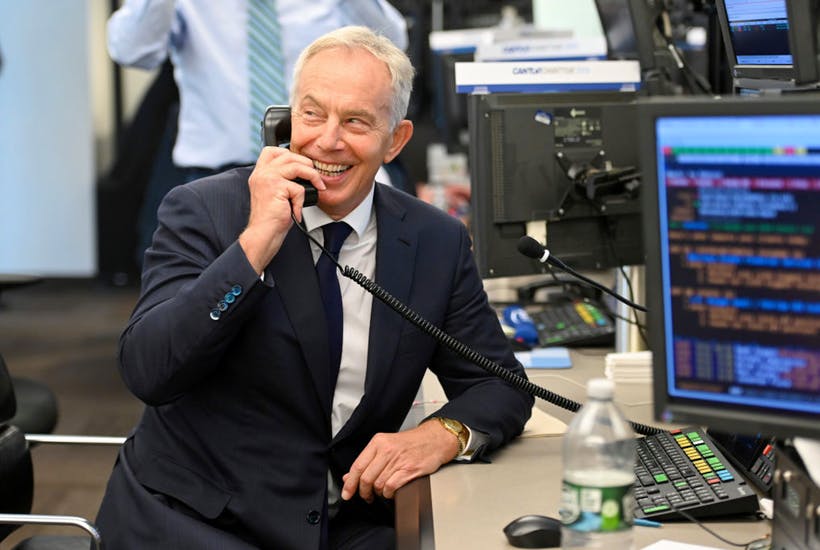Tony Blair is at it again. With Labour members currently pondering who should replace Jeremy Corbyn, the party’s most electorally successful living leader once more decided to give them the benefit of his experience, whether they wanted it or not. This time it took the form of a history lesson: to mark the party’s 120th anniversary he gave a lecture on what it takes for the party to regain power. But should we listen to what Blair has to say?
For keen Blair-watchers this address contained no surprises: he has been saying much the same things since becoming Labour leader in 1994. As ever, Blair’s starting point was the pathetically small number of times Labour has ever won power. His explanation for this sorry record was the party’s inherent desire to talk to itself and follow a narrow left-wing path rather than listen to ordinary people’s concerns and secure the centre ground of politics. To win back that ground, Blair reiterated another favourite trope: Labour needs to build a new progressive coalition and reunite the liberal and labourist traditions fatally divided at the start of the twentieth century. But whoever leads the party after Corbyn needs to go further than that, he claimed, and escape Labour’s comfort zone of tax-and-spend, state power, an anti-Western foreign policy and an obsession with identity politics.
Instead they should pursue progressive politics in a new way, one attuned to the needs of our own times. Labour in other words, Blair concluded, requires a ‘fundamental reconstruction’ – to be ‘born again’. He did not quite say the party needed a New Labour 2.0 but he might as well have done.
He did not quite say the party needed a New Labour 2.0 but he might as well have done.
This was never going to be an assessment that would please the party’s hard left. In response to Blair’s history lesson uber-Corbynite Richard Burgon, campaigning to be deputy leader even called on him to ‘pipe down’. As the only Labour leader to deliver three successive Commons majorities, Blair deserves more respect. Yet, while there are some, like columnist and Blair biographer John Rentoul, who believe in ‘the eternal verities of the Blairite truth’ his perspective is not infallible. As Burgon reminded the former prime minister, after his 1997 landslide by the 2010 election Labour had lost five million votes.
Certainly one awkward question that arises from Blair’s diagnosis of Labour’s ills is this: given he was Labour leader for thirteen years, why is Labour now in such a dire position?
As leader, Blair sought to transform Labour into the kind of party he outlined in his talk. And for a time, it looked like he had succeeded. To that end he tried to clarify its ideological character by revising clause IV of the party’s constitution which since 1918 had defined the party’s sole object as the expansion of public ownership of the economy.
In his 2010 memoirs, Blair explained the rationale for this controversial and risky act. To him the old clause symbolised, ‘a refusal to confront reality, to change profoundly, to embrace the modern world wholeheartedly. … It was a graven image, an idol. Breaking it would…change the psychology in the party that was damaging and reactionary and which was precisely what had kept us in opposition for long periods.”
His revision – which pledged Labour to foster a “dynamic economy, serving the public interest, in which the enterprise of the market and the rigour of competition are joined with the forces of partnership and co-operation” was bitterly opposed by the party’s hard left. But in a vote held in 1995, 58 per cent of members endorsed Blair’s new clause.
The new clause helped impress on a hitherto sceptical public that Labour had changed and morphed into New Labour. This enabled Blair to pursue an electoral strategy firmly and very successfully focused on occupying the centre ground. The result was the 1997 landslide; one also significantly helped by the Conservatives pressing the auto-destruct button by tearing themselves apart over Europe.
But Blair did not engineer the kind of cultural change he hoped to promote within Labour. While miners’ leader Arthur Scargill immediately left the party to create his Socialist Labour party, which placed the old clause at the heart of its constitution, Jeremy Corbyn and colleagues remained. And many of those who voted for Blair’s new clause did so because they were persuaded it would help the party win power after over 15 years in Opposition. It did not mean they had abandoned their belief in public ownership: a 1997 membership survey revealed half of members continued to want more nationalisation of the economy. Ironically it was Blair’s own sustained electoral success that emboldened members – and trade union leaders – to demand more than he was prepared to deliver in government, whatever the 1995 clause said.
This is not to say that Blair’s basic lesson for Labour, that it should cleave to the centre and be more open to an engagement with the liberal tradition if it seriously wants power, is incorrect. But his call for the party to be ‘born again’ is dangerously glib and underestimates the hard challenges to be faced by a new Labour leader intent on winning back the millions of voters lost since 2010. Because if Tony Blair failed to achieve it, how can anybody else?
Steven Fielding is professor of political history at the University of Nottingham and is writing ‘The Labour Party: from Callaghan to Corbyn’ for Polity Press, to be published in 2021. On Twitter he is @PolProfSteve






Comments